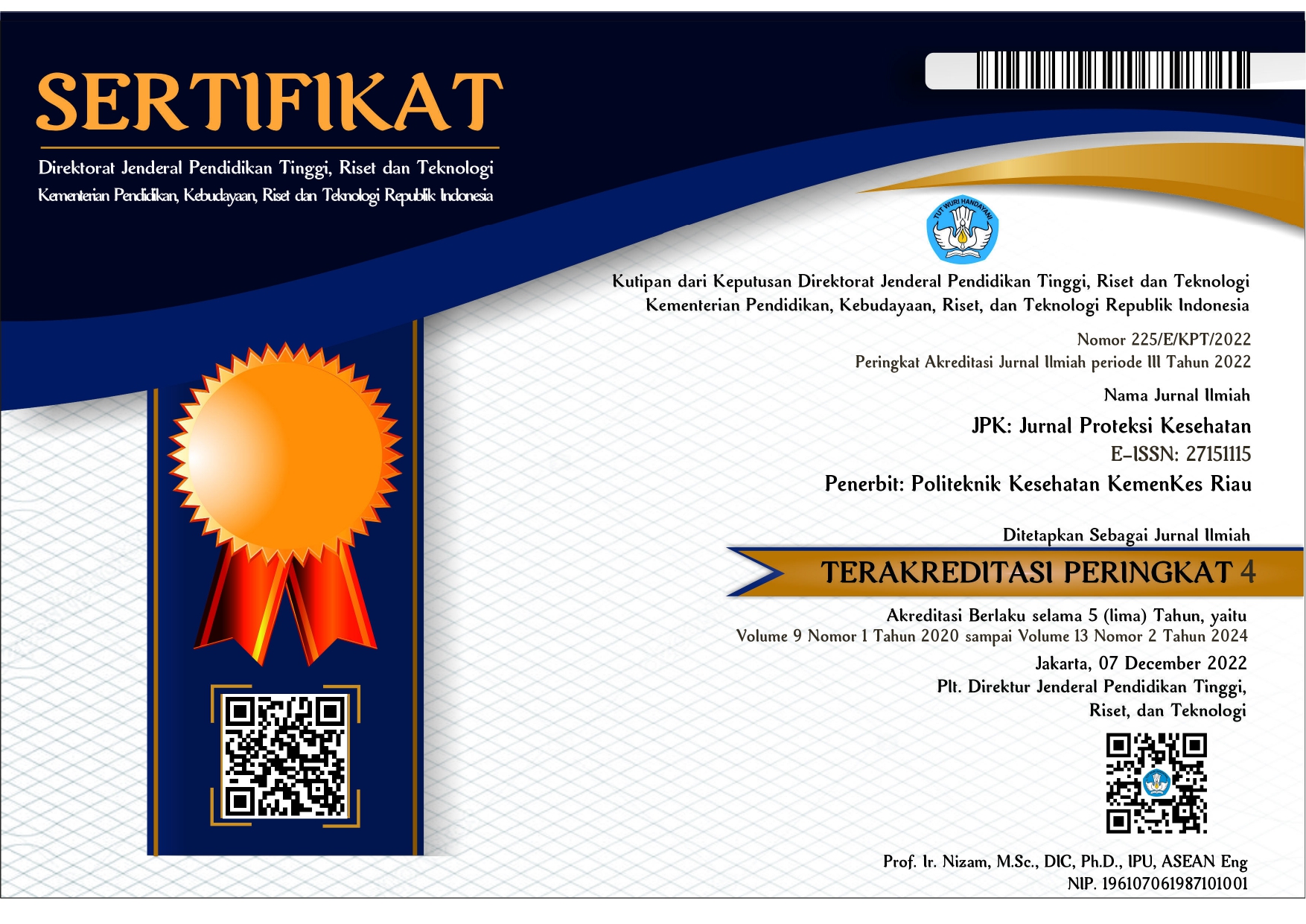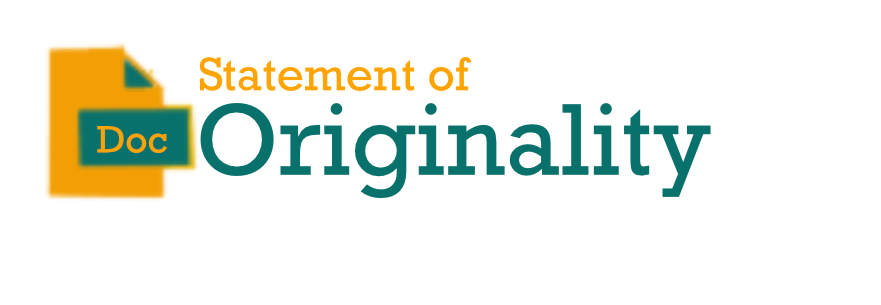Knowledge of Athlete Nutrition, Parents, and Macronutrients Intake of Karate Shindoka Athletes
Abstract
Athletes have a higher activity compared to ordinary people, so their nutritional needs are different and require specific attention with proper dietary arrangements to be able to meet their nutritional needs. Good nutritional knowledge is expected to influence the consumption of correct and appropriate foods so that athletes can meet their nutritional needs. It aims to support increased stamina so athletes can support their achievements well. This study aims to determine the level of nutritional knowledge of athletes, parents, and the macronutrient intake of karate athletes Shindoka Riau. The sampling technique was total sampling with 25 respondents aged 12-18. Data collection was using questionnaires and food recall 2x24 hours. The results showed that athletes were 88% less energy intake, 96% less carbohydrates, 88% less fat, and 68% less protein. The level of knowledge of athletes is less than 68%, and the level of knowledge of parents is sufficient, which is 52%. It concluded that most of the nutritional knowledge of athletes and their parents in the less category had nutrient intake in the less category.
References
[2] E. K. Dewi and M. Kuswary, “Hubungan Asupan Zat Gizi Makro dan Status Gizi terhadap Kebugaran Atlet Bulutangkis Jaya Raya Pada Atlet Laki - Laki dan Perempuan di Asrama Atlet Ragunan Tahun 2013,” vol. 5, no. 2, pp. 94–112, 2013.
[3] R. Salamah, “Hubungan Asupan Zat Gizi, Aktivitas Fisik, dan Persentase Lemak Tubuh dengan Kebugaran Jasmani,” Media Kesehat. Masy. Indones., vol. 18, no. 2, pp. 14–18, 2019, doi: 10.14710/mkmi.18.2.14-18.
[4] I. Muthmainnah, Ismail, and S. Prabowo, “Hubungan Asupan Energi Dan Zat Gizi Makro (Protein, Karbohidrat, Lemak) Dengan Kebugaran (VO2Max) Pada Atlet Remaja Di Sekolah Sepak Bola (SSB) Harbi,” J. Kesehat. Masy. Mulawarman, vol. 1, no. 1, p. 24, 2019, doi: 10.30872/jkmm.v1i1.2525.
[5] H. P. Putri, “Hubungan Tingkat Pengetahuan Gizi dengan Asupan Zat Gizi pada Bodybuilder,” Progr. Stud. ILMU GIZI Fak. Kedokt. Univ. DIPONEGORO SEMARANG, 2011.
[6] M. Santoso, “Survei Pengetahuan Gizi, Pola Konsumsi Dan Tingkat Kecukupan Gizi Atlet Sepak Bola Dan Sepak Takraw Pplp Jawa Tengah Tahun 2016,” Universitas Negeri Semarang, 2016.
[7] Nindyna Puspasari and Merryana Andriani, “Hubungan Pengetahuan Ibu tentang Gizi dan Asupan Makan Balita dengan Status Gizi Balita (BB/U) Usia 12-24 Bulan,” Amerta Nutr., vol. 1, no. 4, pp. 369–378, 2017, doi: 10.20473/amnt.v1.i4.2017.369-378.
[8] AKG, Peraturan Menteri Kesehatan Republik Indonesia Nomor 28 Tahun 2019 Tentang Angka Kecukupan Gizi Yang Dianjurkan Untuk Masyarakat Indonesia. Indonesia, 2019.
[9] C. M. Kerksick and M. Kulovitz, Requirements of Energy, Carbohydrates, Proteins and Fats for Athletes. Elsevier Inc., 2014.
[10] J. R. Berning and A. Kendig, Nutrition Guide. 2016.
[11] D. Novitasari, M. Rahfiluddin, and S. Suroto, “Tingkat Konsumsi Energi, Aktivitas Fisik Dan Kesegaran Jasmani Pada Posisi (Tosser Dan Smasher) Atlet Bola Voli,” J. Kesehat. Masy., vol. 4, no. 2, pp. 38–45, 2016.
[12] A. D. Adisoejatmien, G. S. Pontang, and Purbowati, “the Corelation Between of Energy and Nutrients Macro With Physical Fitness of Athletes in Center for Education and Training of Sports for Students (PPLOP) as Central Java,” J. Gizi dan Kesehat., vol. 10, no. 23, pp. 30–41, 2018.
[13] R. Gina and E. Adi, “Pengaruh Asupan Makan (Energi, Kerbohidrat, Protein dan Lemak) terhadap Daya Tahan Jatung Paru (VO2maks) Atlet Sepak Bola,” J. Nutr. Coll., vol. 1, no. 1, pp. 199–208, 2012, [Online]. Available: https://media.neliti.com/media/publications/185001-ID-pengaruh-asupan-makan-energi-karbohidrat.pdf%0A.
[14] W. Welis and M. S. Rifki, Gizi Untuk Aktivitas Fisik dan Kebugaran. Padang: Sukabina Press, 2013.
[15] R. R. Tanuwijaya, A. Kristiyanto, and M. Doewes, “Pengaruh Pemberian Air Gula Merah Terhadap Kebugaran Jasmani,” J. Gizi, 6(2), vol. 6, pp. 12–19, 2017.
[16] M. Kuswari, F. Handayani, N. Gifari, and R. Nuzrina, “Hubungan Asupan Energi, Zat Gizi Makro dan Mikro terhadap Kebugaran Atlet DYVA Taekwondo Centre Cibinong,” JUARA J. Olahraga, vol. 5, no. 1, pp. 19–30, 2019.
[17] A. Noordia, “Hubungan Persentase Lemak Tubuh terhadap Kemampuan VO2max Pada Atlet Gulat Kota Surabaya,” J. Kesehat. Olahraga. Vol., vol. 3, no. 3, pp. 118–124, 2015.
[18] Fatmah and Ruhayati, Gizi Kebugaran dan Olahraga. Bandung: Lubuk Agung, 2010.
[19] S. W. Berry Surya Nugraha and B. A. Mighra, “Tingkat Pemahaman Orang Tua tentang Hubungan Gizi dengan Prestasi Atlet Renang di Perkumpulan Renang Dolphin Jember,” J. Nutr., 2021.
[20] F. N. Hanum, “Hubungan Karakteristik Atlet, Pengetahuan Gizi, Konsumsi Pangan, dan Tingkat Kecukupan Gizi Terhadap Kebugaran Atlet Bola Basket Di SMP/SMA Ragunan Jakarta Selatan,” 2011.
[21] I. Spronk, C. Kullen, C. Burdon, and H. O’Connor, “Relationship between nutrition knowledge and dietary intake,” Br. J. Nutr., vol. 111, no. 10, pp. 1713–1726, 2014, doi: 10.1017/S0007114514000087.
[22] N. U. Ahamed, K. Sundaraj, R. B. Ahmad, M. Rahman, and M. A. Islam, “Analysis of Right Arm Biceps Brachii Muscle Activity with Varying the Electrode Placement on Three Male Age Groups During Isometric Contractions Using a Wireless EMG Sensor,” Sci. Direct, vol. 41, 2012, doi: https://doi.org/10.1016/j.proeng.2012.07.143












